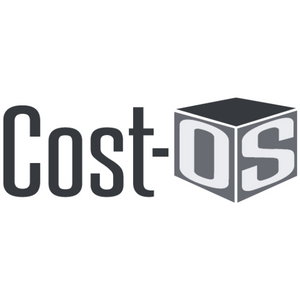Integrating Preconstruction Technology for Maximum ROI

Integrating preconstruction technology has become a key driver for maximizing ROI in the fast-evolving construction industry. By improving planning and collaboration, reducing risks, and enhancing efficiency, preconstruction technology allows project teams to navigate the complexities of modern construction projects. Let’s explore how adopting digital tools, such as estimating software and cloud-based solutions, can transform the preconstruction phase, resulting in successful projects and a more streamlined construction process.
The Power of Preconstruction Technology
Preconstruction is the foundation of any successful construction project. It sets the stage for planning, budgeting, and coordination, ensuring that all stakeholders—from general contractors to subcontractors—are aligned. Traditional preconstruction methods relied heavily on spreadsheets, manual calculations, and face-to-face meetings. These processes were time-consuming and prone to error, often leading to delays and cost overruns.
However, with the advent of preconstruction technology, these methods have become increasingly obsolete. Today’s construction firms can leverage advanced tools to improve accuracy, increase speed, and mitigate risks. By integrating the latest digital tools, construction teams can gain better visibility and control over the entire construction process, from design to delivery.
Enhancing Efficiency with Estimating Software
One of the most significant advancements in preconstruction technology is the development of estimating software. For example, DESTINI Estimator offers robust features that automate calculations and provide real-time data analysis, simplifying the traditionally complex cost estimation process. This leads to more accurate bids and faster turnaround times, ultimately enhancing efficiency and profitability.
Lead Estimator Brian Parker at Sundt Construction saw an improvement with ROI when switching to DESTINI Estimator. He says, “The platform is also useful when clients aren’t sure what they want the building to look like. With DESTINI Profiler, we can easily model four or five options and show the cost impact to the bottom line. The earlier you can make those decisions, the quicker the project will go. The DESTINI suite saves time and money for everyone.”
General contractors can reduce human error and increase efficiency by automating the estimating process. This is important during the preconstruction phase, when accurate cost projections ensure that projects stay within budget. With cloud-based estimating tools, project teams can collaborate more effectively, accessing and updating data in real time, no matter where they are.
Now that you understand how estimating software boosts efficiency, see exactly how it translates into savings. Check your potential returns instantly using our ROI Calculator.
Reducing Risks with Digital Tools
Risk management is another area where preconstruction technology offers a significant return on investment. The construction industry has risks such as supply chain disruptions, weather delays, and unforeseen site conditions, which can negatively impact project timelines and budgets. However, using digital tools, preconstruction teams can proactively identify potential risks and develop mitigation strategies before the project breaks ground.
For example, 3D models and quantity takeoffs can provide a detailed view of the project, helping teams identify potential design issues or conflicts before they occur. By visualizing the entire project in a digital format, teams can identify risks related to construction design and the impact of potential changes to the scope of work. Digital tools also allow continuous updates throughout the preconstruction phase, keeping the project on track and reducing costly delays.
Improving Collaboration for Successful Project Delivery
Collaboration is essential to the success of any construction project, and preconstruction technology enables communication between project teams, stakeholders, and subcontractors. Traditional collaboration methods often involved long email threads, in-person meetings, and manual sharing of plans and documents. These methods were not only inefficient but could also cause miscommunication.
Today’s cloud-based platforms offer a centralized location where construction teams can share files, track progress, and collaborate in real time. Project delivery becomes much smoother when using these tools because all relevant parties can access the most up-to-date information at any time. This ensures the project moves forward without delay, with everyone staying aligned to objectives, deadlines, and budgets.
Additionally, bid management tools allow contractors to streamline the bidding process, making it easier for subcontractors to submit competitive bids while ensuring compliance with project specifications. The result is a more efficient and transparent process that benefits general contractors and subcontractors.
The Role of 3D Models and Virtual Design in Preconstruction
One of the most powerful tools available in preconstruction technology is 3D modeling. Digital models provide a detailed representation of a construction project before any physical work begins. These models allow project teams to visualize every aspect of the construction process, from the building’s structure to its mechanical, electrical, and plumbing systems.
Using 3D models, construction teams can identify design flaws early, ensuring issues are addressed before the physical work begins. This proactive approach to design and construction helps minimize costly rework and delays. Additionally, simulating different construction scenarios in a virtual environment allows teams to assess potential challenges and test solutions before implementing them in the real world.
3D modeling also enhances collaboration by allowing architects, engineers, contractors, and clients to interact with the exact visual representation of the project. This shared understanding leads to better decision-making and ensures all stakeholders are on the same page.
Cloud-Based Solutions: A Game Changer for Construction Teams
Cloud-based solutions have revolutionized the way construction teams manage projects. These tools allow all stakeholders to access and update project data in real time from anywhere. Whether teams are in the office or on-site, cloud-based platforms provide an easy way to track project progress, manage documents, and monitor budgets.
One key benefit of cloud-based technology is that it enables project teams to maintain a single source of truth. With all data stored in the cloud, everyone can access the same information, reducing the risk of miscommunication and ensuring the project stays on track. Additionally, cloud-based tools often integrate with other preconstruction technologies, such as estimating software and 3D modeling tools, creating a unified system for managing the entire project lifecycle.
The Future of Preconstruction Technology
As the construction industry continues to use digital transformation, we can expect further advancements in artificial intelligence, machine learning, and augmented reality, which will continue to shape how construction teams approach project planning and delivery.
For example, artificial intelligence can help construction teams analyze large amounts of data to predict project outcomes and identify potential risks. Machine learning algorithms can optimize schedules and resource allocation, making construction processes more efficient. Augmented reality could offer a more immersive way to interact with 3D models, allowing stakeholders to explore virtual representations of the project on-site.
Incorporating these technologies into the preconstruction phase will enhance the ability of construction teams to deliver projects on time, within budget, and with minimal risk. By staying ahead of these technological trends, construction firms can maximize ROI and remain competitive in an increasingly digital world.
The Future of Preconstruction Is Now With Technology
Integrating preconstruction technology into the construction process offers a significant return on investment by improving efficiency, reducing risks, and enhancing collaboration. With the right digital tools, such as estimating software like DESTINI Estimator, 3D modeling, and cloud-based platforms, construction teams can optimize the preconstruction phase to ensure the success of their projects.

-1.png?width=112&height=112&name=image%20(4)-1.png)














